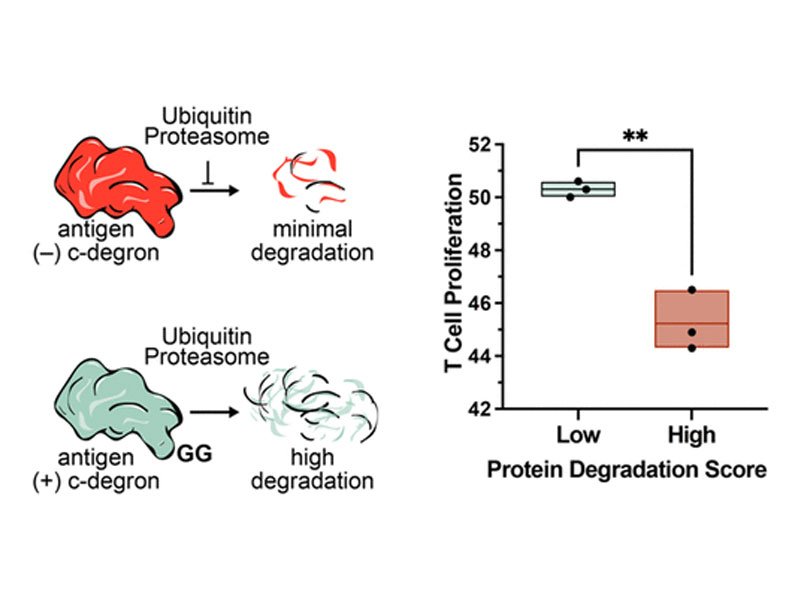
Design of Cytotoxic T Cell Epitopes by Machine Learning of Human Degrons

Design of Cytotoxic T Cell Epitopes by Machine Learning of Human Degrons
Nicholas L. TruexSomesh MohapatraMariane MeloJacob RodriguezNa LiWuhbet AbrahamDeborah SementaFaycal ToutiDerin B. KeskinCatherine J. WuDarrell J. IrvineRafael Gómez-Bombarelli*Bradley L. Pentelute*
Abstract
Antigen processing is critical for therapeutic vaccines to generate epitopes for priming cytotoxic T cell responses against cancer and pathogens, but insufficient processing often limits the quantity of epitopes released. We address this challenge using machine learning to ascribe a proteasomal degradation score to epitope sequences. Epitopes with varying scores were translocated into cells using nontoxic anthrax proteins. Epitopes with a low score show pronounced immunogenicity due to antigen processing, but epitopes with a high score show limited immunogenicity. This work sheds light on the sequence–activity relationships between proteasomal degradation and epitope immunogenicity. We anticipate that future efforts to incorporate proteasomal degradation signals into vaccine designs will lead to enhanced cytotoxic T cell priming by these vaccines in clinical settings.



